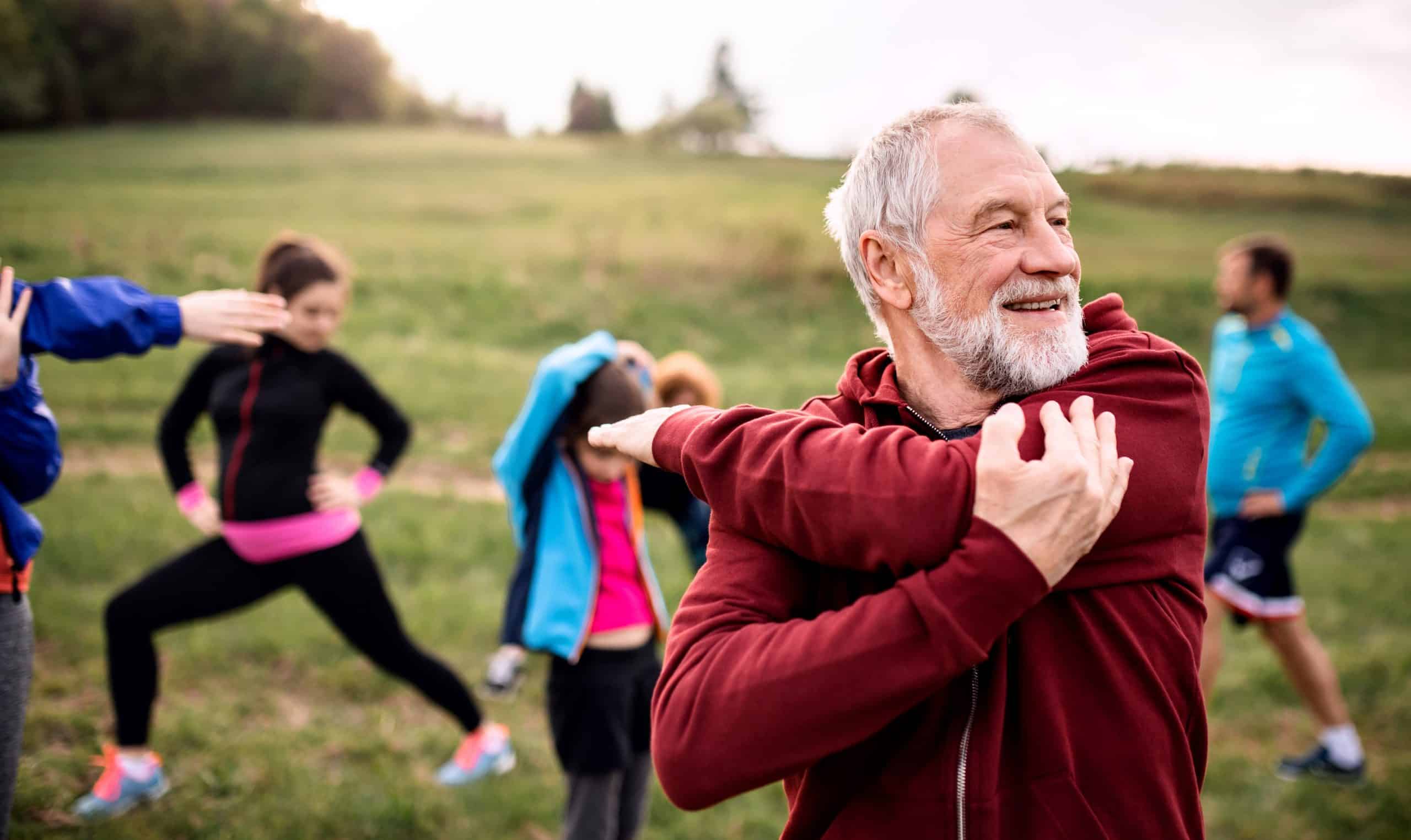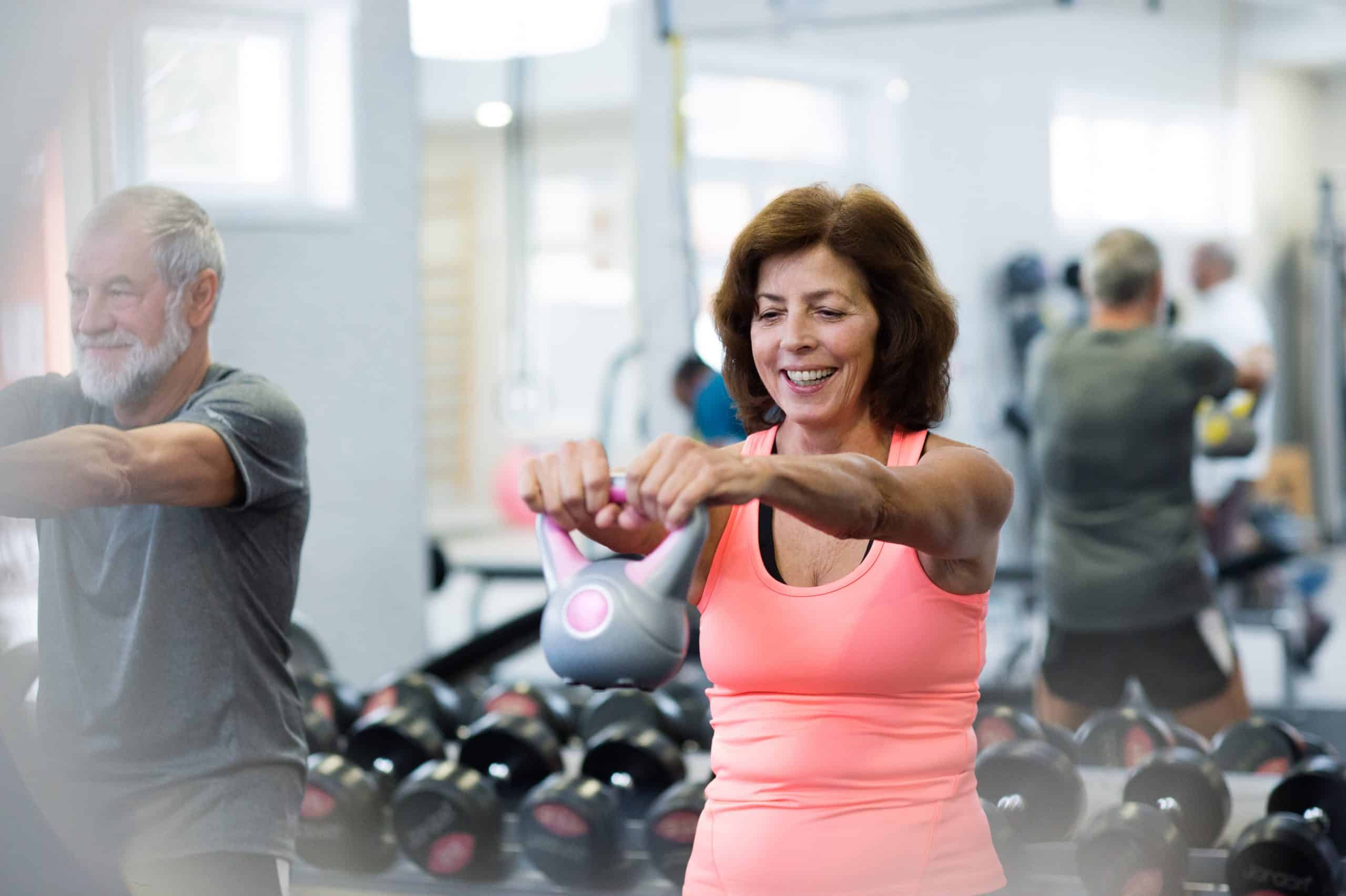Exercise for Seniors
A Guide to the 12 Best Exercises and Workouts for Seniors
SeniorLiving.org is supported by commissions from providers listed on our site. Read our Editorial Guidelines
Fitness is important at any age. Jack LaLanne, the “godfather of fitness,” was proof of that. Not only did the exercise and nutrition guru accomplish a number of herculean feats, but he practiced a regular exercise routine of stretching, weight lifting, and cardio into his 90s.
Having a daily schedule that incorporates some type of exercise can improve health and wellness, particularly for older adults. Long-term moderate to vigorous exercise for older adults can boost physical and emotional health and improve health outcomes as we age. The Centers for Disease Control and Prevention (CDC) recommends that adults 65 and older get at least 150 minutes of moderate exercise a week. 1
While that may sound like a lot, there’s several ways to get in daily exercise. It’s likely you already dabble in a few of those exercises like gardening, brisk walking, and maybe even a little salsa dancing. Having a well-rounded exercise regimen can keep you fit and feeling good.
Benefits of Exercise
There have been several studies about the many benefits of exercise. Some of the major benefits include improved immune function, disease prevention, and disease management. Exercise can protect against cardiovascular disease, obesity, diabetes, cancers, high blood pressure, and osteoporosis. Regular exercise also releases endorphins. Endorphins make a person feel better, relieve stress and anxiety, and improve overall mental health.
Exercise can improve your energy, strength, balance, and flexibility. It can also help prevent falls, which are more common as adults age. Older adults that engage in regular exercise can improve their cognitive function, resulting in a lower risk of dementia. Regular exercise, particularly in a group setting, can give older adults purpose and less feelings of depression or loneliness. Lastly, regular exercise allows older adults to enjoy more independence and less reliance on others to complete activities of daily living.
Pro Tip: The number of people worldwide aged 80 years or more is expected to triple, from 143 million in 2019 to 426 million in 2050, per the United Nations.2 That makes staying healthy as we age more important than ever!
Many senior living communities offer a variety of amenities to keep older adults active. While older adults may not be as active as they were in their youth, beginning exercise at any age can be beneficial to the mind and body. However, older adults should first check with their physician to see what approved exercises they can do, and they should only engage in exercise activities at their own pace.
How Much Should Seniors Exercise?
Older adults should aim for 150 minutes of exercise a week. Below are three different ways to meet those exercise requirements, per the CDC.
| 1) Moderate-intensity aerobic activity for 150 minutes | 2) Vigorous-intensity aerobic activity for 75 minutes | 3) Combination of both |
|---|---|---|
| Do a brisk walk, dance, or participate in a water aerobics class for 30 minutes a day, five times a week | Jog or run for one hour and 15 minutes each week | Do a mix of moderate- and vigorous-intensity aerobic activities two or more days a week |
| Muscle-strengthening activities two or more days a week targeting all major muscles, such as working with resistance bands | Muscle-strengthening activities two or more days a week targeting all major muscles, such as lifting dumbbells | Muscle-strengthening activities two or more days a week targeting all major muscles, such as exercises that use your body weight like wall pushups |
| Balance activities such as walking backward or standing on one leg | Balance activities such as standing on one leg or practicing standing from a sitting position | Balance activities such as standing on one leg or using a balance board |
The 12 Best Exercises for Seniors
Having a set exercise routine and sticking to it can be difficult for anyone. But any activity that gets your body moving is a good start! There are many ways to meet your daily exercise objectives. Here are the 12 best exercises for older adults to try out.
Aerobic Exercises
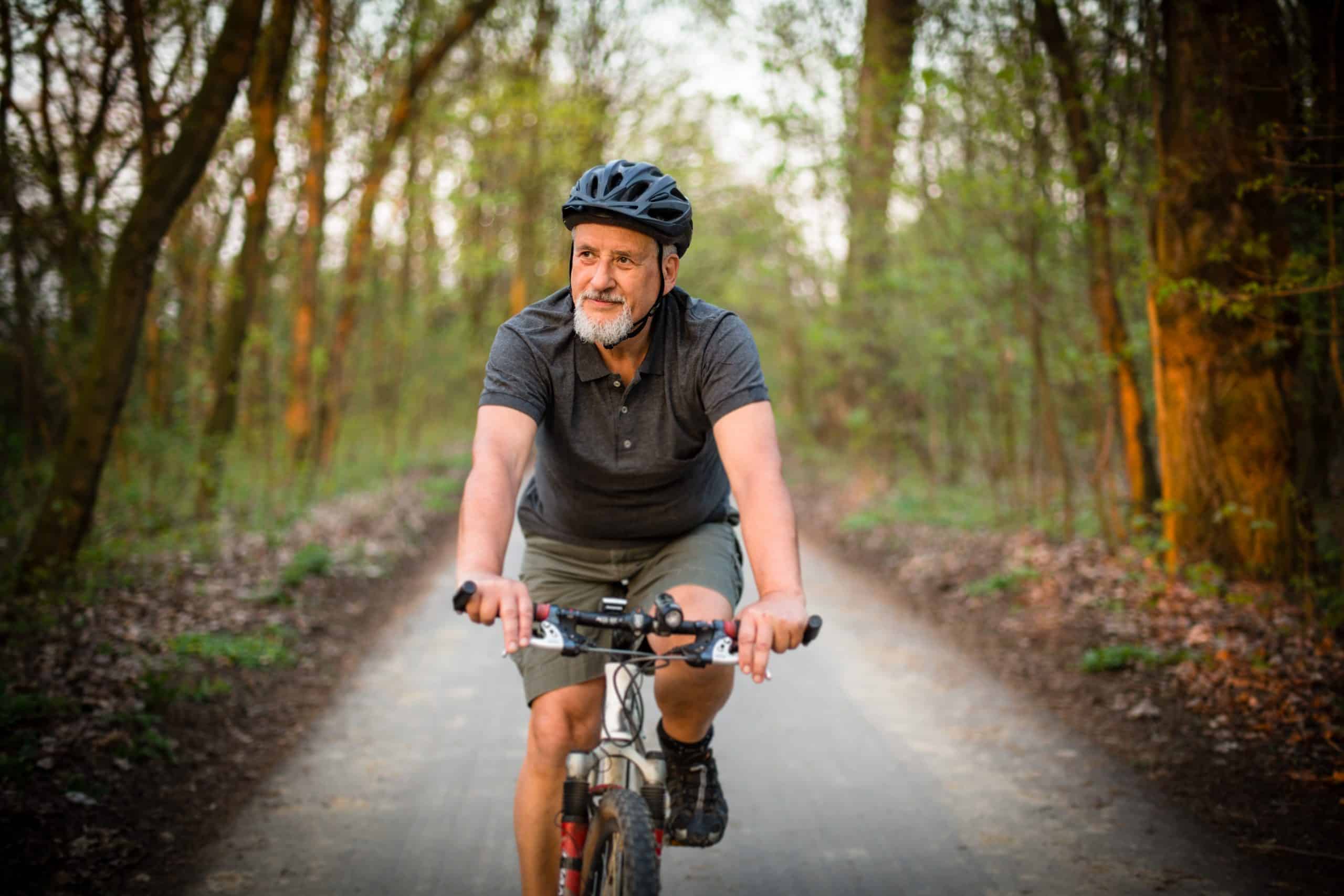
- Brisk walking: Put on some good walking shoes and take a nature walk or walk with a group of friends. Brisk walking puts an emphasis on speed rather than mileage, so make sure you’re walking at a solid pace.
- Dancing: Dancing to music stimulates the ears, moves the body, and can be a fun and social activity. Whether you participate in ballroom dancing or line dancing, it will add cardio to your exercise routine while improving balance, coordination, flexibility, and self-confidence. Plus, it’s an instant mood booster. It also challenges your memory, since you have to remember all those steps!
Water Aerobics
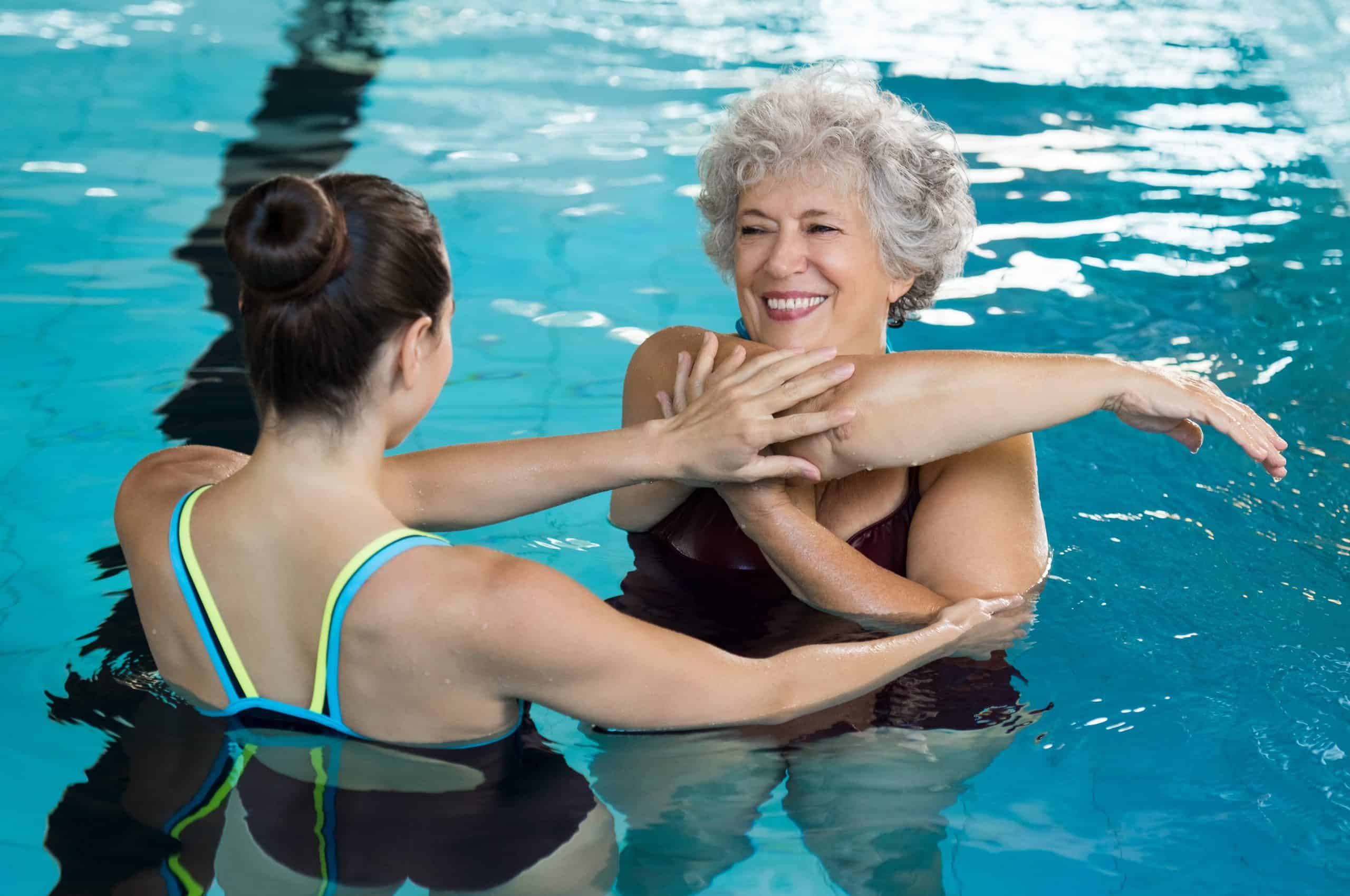
- Water jogging: Water jogging or aqua walking is a great exercise where older adults can jog in place or do laps in the shallow area by walking back and forth with their feet flat (no tippy toes!). When you’re ready to take it up a notch, try the same routine while jogging.
- Arm curls: Using water weights made of foam, get in the pool at shoulder height with your arms straight down and your palms facing upward. Curl your arms up and down so you feel the resistance of the water.
Strength Training
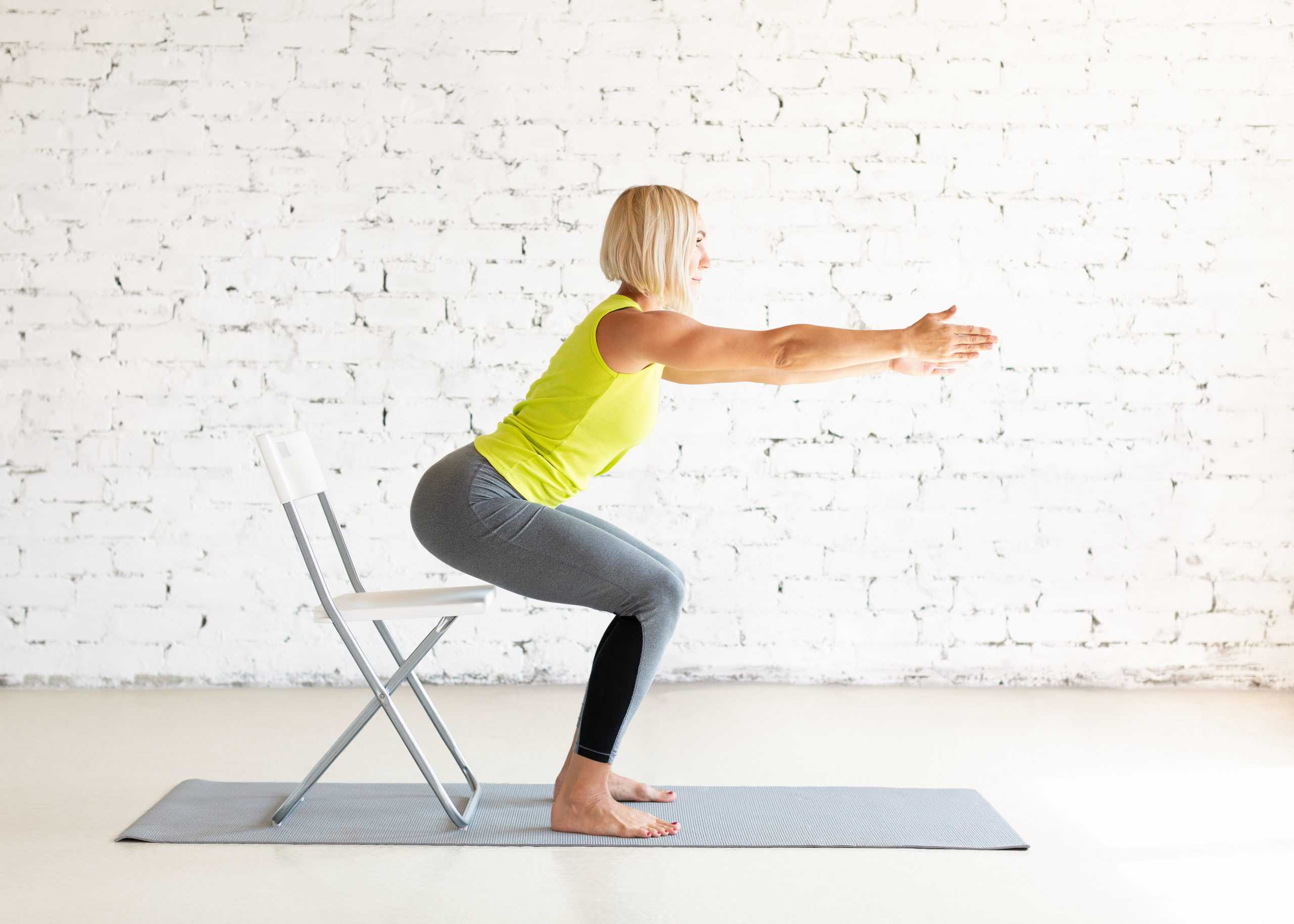
- Stand in front of a chair: This exercise, also known as chair squats, is great for mobility and promotes independence. Stand with your feet about hip width apart and extend both arms straight in front of you for balance. Then, bend your knees to sit down. Use your hips (rather than your knees) to push down into the chair when doing this exercise. With your posture straight and knees pointing forward, stand up from sitting position and repeat.
- Wall pushups: Wall pushups can strengthen your whole body, but especially your arms and chest. Face a wall and stand straight about two feet away with your feet shoulder width apart. Place your hands on the wall with your elbows bent slightly. Begin doing push ups to lower your chest close to the wall, and repeat.
FYI: A recent study of prolonged resistance exercise training published in the International Journal of Sport Nutrition and Exercise Metabolism found increases in muscle mass, strength, and physical performance among older adults were no different between the 65 to 75 and 85+ age groups. Older adults who lifted weights three times a week, no matter the age, showed significant muscle growth.3
Weightlifting
Muscle tone declines with age. Weightlifting can build muscle strength and mass at any age and prevent weakness and frailty in older adults. Weightlifting should be gradually started using light weights and resistance bands. Pumping iron can increase upper and lower body strength, help prevent fractures and falls, and increases range of motion.
- Overhead press with dumbbells: To start, hold weights out in front of you at shoulder height with palms forward. Then lift the weights above your head and return to shoulder height for the next rep. You can also lift weights at your side by raising your arms to shoulder height.
- Resistance bands: Resistance bands engage all muscle groups. The harder they’re pulled, the heavier the band feels. To do curls, stand on the middle of the band and hold the ends at your sides. Then, bend your elbows (but not your wrists) to pull the band up toward your shoulders.
Yoga
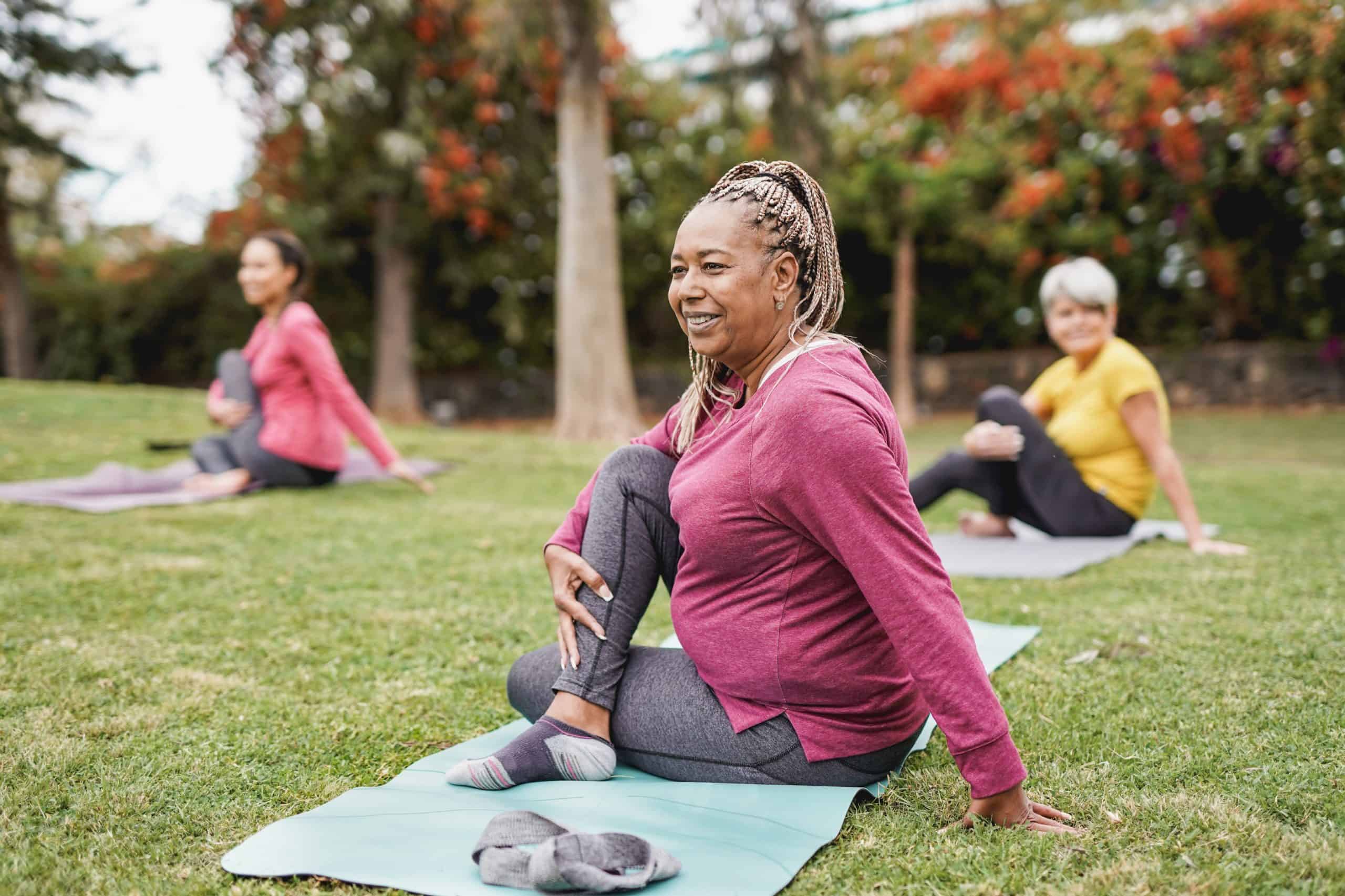
- Mountain pose: Stand like you’re a mountain. Begin by standing with your feet hip distance apart and arms at your sides with palms facing outward. Roll your shoulders back while lifting your chest out and stand tall.
- Chair yoga: Chair yoga has numerous exercises that can be done while seated, such as the overhead stretch. Begin by sitting upright with a good posture, and take a deep breath while raising your hands toward the ceiling. Hold the position. Exhale while bringing your arms back down.
Pilates
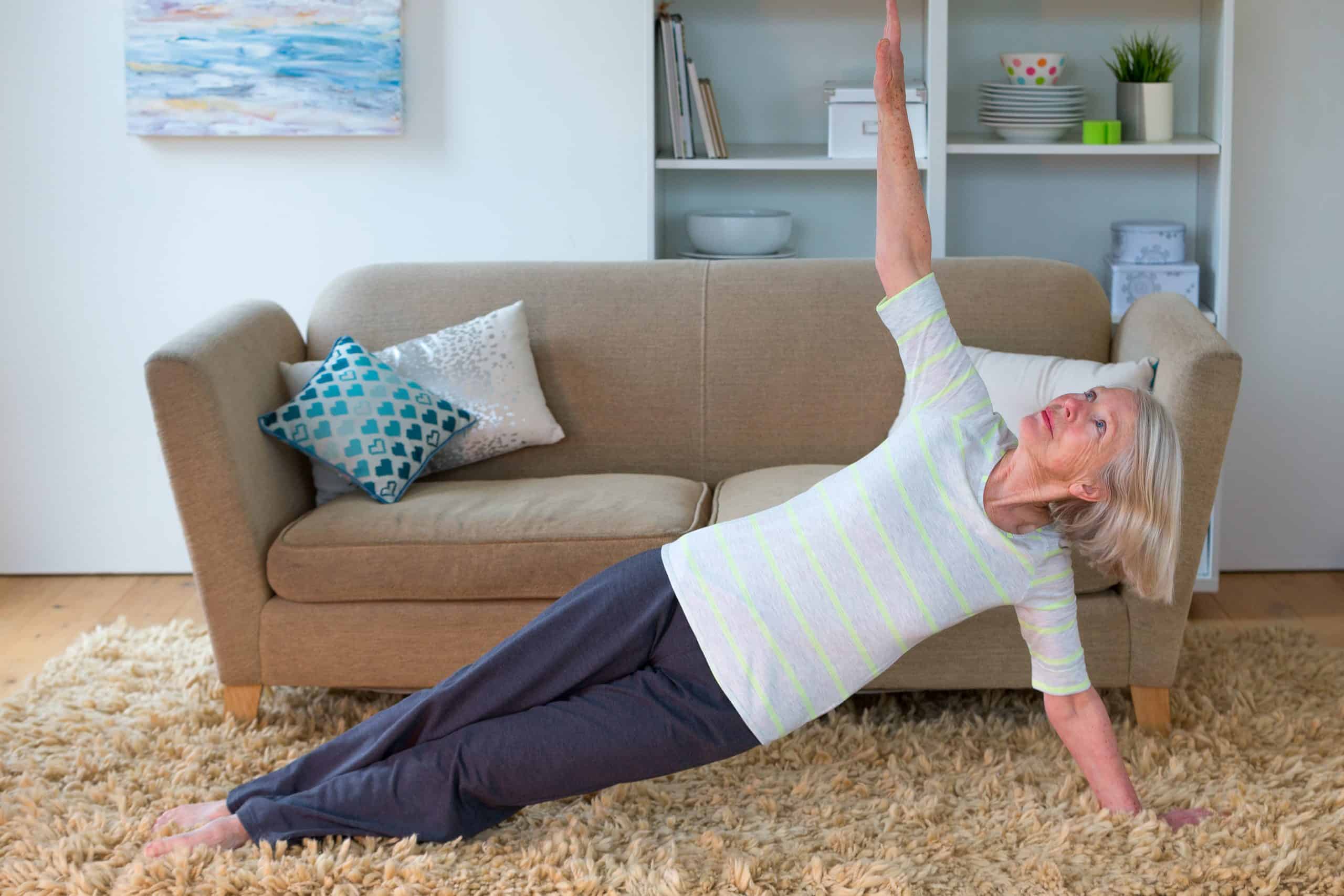
- Swimming: This exercise isn’t done in the pool, but you’ll be somewhat simulating swimming. Lie face down on the floor and pull in your belly button into your spine while extending your right arm and left leg off the floor simultaneously. Then alternate with the left arm and right leg.
- Bird dog: The bird dog is meant to strengthen your core and back. To do this exercise, get on all fours and align your knees with your hips and your arms with your shoulders. Lift your right arm and extend your left leg so that they’re in line with the rest of your body. Keep your gaze toward the ground. Hold that position for a bit and then repeat with the left arm and right leg.
Did You Know? Jack LaLanne lived to be 94 years old. At the age of 70, he towed 70 boats with 70 people from the Queen’s Way Bridge in the Long Beach Harbor to the Queen Mary in California. That’s a distance of one and a half miles, and he did it while swimming handcuffed and shackled!4
CDC. (2023). How much physical activity do older adults need?
United Nations. (2019). World Population Ageing 2019.
Human Kinetics. (2023). Muscle Mass and Strength Gains Following Resistance Exercise Training in Older Adults 65–75 Years and Older Adults Above 85 Years.
JackLaLane. (2024). THE GODFATHER OF FITNESS® KING OF FITNESS®.

